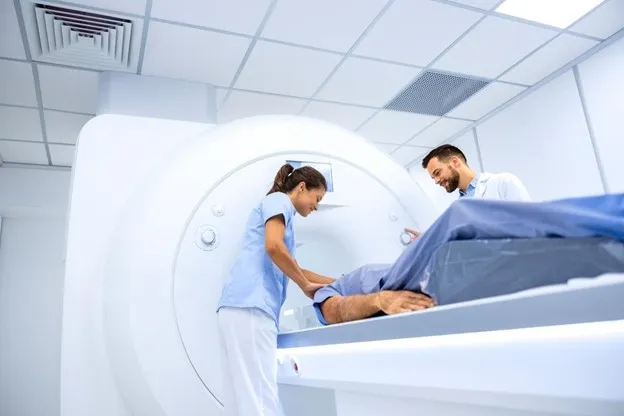ARRT Certification Options: Exploring the Career Pathways
October-03-2024

One of the main draws of ARRT certification is that there are so many options for you to choose from when it comes to building up your career. However, that also creates a lot of questions for most people.
Do you want to specialize in a single discipline and master it, or do you want to become certified in many disciplines and take on a huge role in your healthcare facility? What’s the best option for you? Can you take it even further?
Well, the best way to avoid being overwhelmed and make the right decisions for your career is to familiarize yourself with your options early on.
So, we’ve created this guide for ARRT certification options to help you. Read on!
The Primary Pathway
The primary pathway consists of the 6 disciplines that you have to choose from to pursue your first credential. While advanced in comparison to a normal career path, and certainly an achievement once you earn one, these are the “starter” credentials that you can enter the field with.\
First, there’s Magnetic Resonance Imaging. That's an MRI technician, and with that discipline, you can be a crucial part of almost any advanced healthcare facility considering how important MRI technology is to the healthcare field.
Next, Nuclear Medicine Technology is a popular discipline that is unfortunately more in demand now than ever. An NMT uses radioactive medicine to diagnose and help treat cancer and other serious conditions.
Radiation Therapy is a discipline that’s adjacent to NMT. However, while NMT refers to imaging efforts, radiation therapy is a treatment using radiological medicines to treat cancer and other similar illnesses.
Sonography is something you might be very familiar with. It’s the discipline that will eventually see you taking on the role of an ultrasound technician. You’ll use sound waves to create images of a patient’s tissues and organs, and this discipline can be used in a wide variety of applications.
Finally, there’s vascular sonography. This is adjacent to general sonography, but it focuses on creating images of the blood network in the body. This can be used to check the health of arteries, look for blood clots, and find other cardiovascular system issues that need to be treated.

All six of these disciplines are the framework for a fulfilling career, and they’re what you can get into with the least amount of time investment. That’s not to say it’s easy, though.
You will need to have an associate’s degree, complete an ARRT-approved educational program that lasts roughly two years, and then complete your ARRT certification exam.
That’s a 200-question exam that takes up to 4 hours to complete, and you have to achieve a score of 75 out of 99 for it to be considered successful.
Post-Primary Career Pathways
One of the great things about ARRT certification is that you’re not forced to just choose a discipline at first and then stay with that career path. You can advance your credentials and start taking on more specialized roles.
You can even seek credentials in different disciplines in the same tier to open up new opportunities.
After you start your career and earn your primary credentials, there are post-primary credentials available.
Mammography is a discipline that covers X-rays of the breasts. This is a type of mammogram technician. This is a common type of mammogram for early detection of breast cancer, screening for breast health, etc. We have ARRT mammography practice tests available if you do decide to take this route with your career.
Breast sonography is adjacent to mammography, but it’s still its own discipline. This is when an ultrasound is used on the breast to create in-depth imagery of the breast tissue. This is like a normal mammogram X-ray, but it’s usually used after an abnormal result comes back from an X-ray.

Cardiac interventional radiography is the discipline that aids in non-invasive cardiac treatments. A cardiac interventional radiographer uses small cameras and tools inserted into blood vessels to treat cardiovascular issues less invasively.
Computed Tomography is another discipline that you’re likely familiar with. When you pursue this discipline, you perform CT scans. There are a multitude of uses for CT scans in the medical field, and this is a great option to improve upon an MRI credential once you get further in your career.
Vascular interventional radiography is similar to cardiac interventional radiography, but it’s for blood vessels instead of the heart. If you decide to pursue this, make sure to try our ARRT vascular interventional radiography practice tests.
These are all options that you can look into as you further your career and want to enter more advanced specializations or broaden your capabilities within the facility you work at.
Many of them are a natural next step depending on the primary discipline you started with, and some simply offer enough flexibility that they can advance your career.
Pursuing Your R.R.A
Finally, the highest credential in the ARRT program is an R.R.A certification. R.R.A. stands for Registered Radiological Assistant, and essentially, you will be in a supportive role right beneath the on-staff radiologist.
Your primary concern is to take on necessary, but less specialized, tasks that would otherwise take time away from the radiologist’s ability to recommend imagery options and handle highly specialized tasks.
This also has the most demanding requirements, because you need a Master’s or Doctorate’s degree before you can pursue it. Although, if you started the program before 2023, a Bachelor’s will suffice. Unfortunately, if you’re reading this, that’s unlikely.
Build Your ARRT-Certified Career with Exam Edge
When considering ARRT certification options, it's essential to choose the right path that aligns with your career goals and expertise.
We hope that this guide helped you find the best fit for advancing your career in radiologic technology.
If you’re starting a career in ARRT disciplines, or you’re looking to pursue a new discipline, make sure to leverage the #1 online test prep resources provided at Exam Edge to get your credentials and succeed each step of the way.
Blogs related to: ARRT Certification Options: Exploring the Career Pathways










